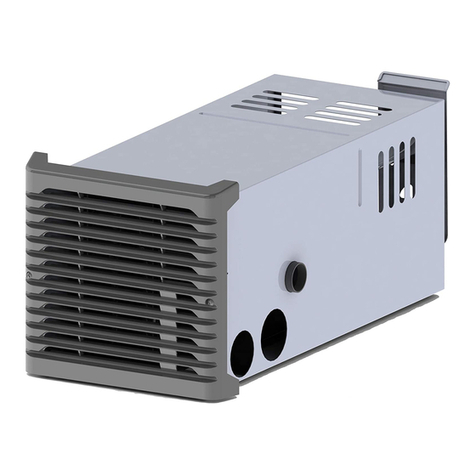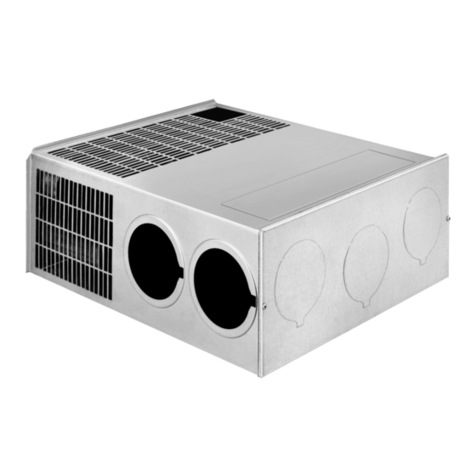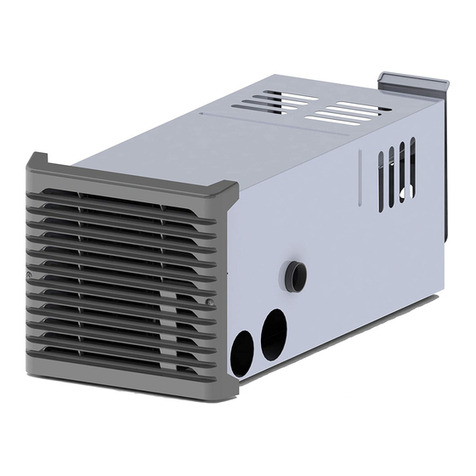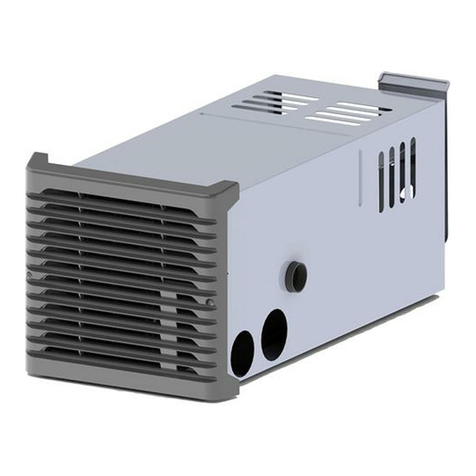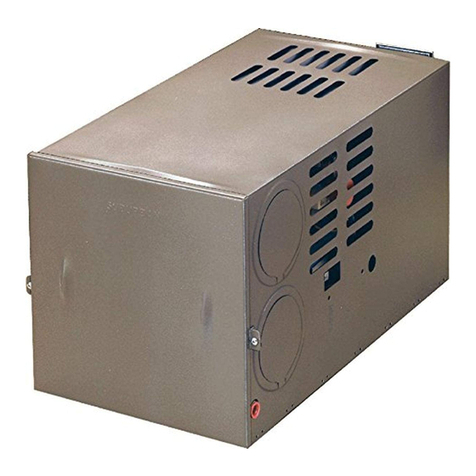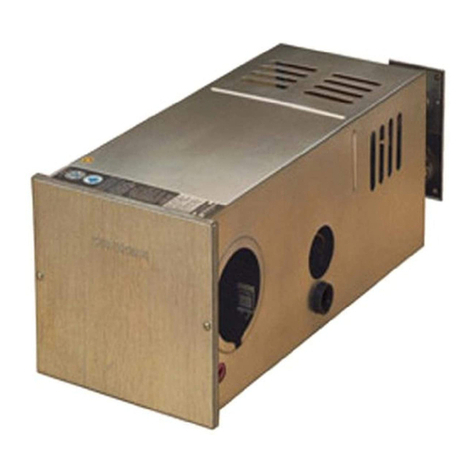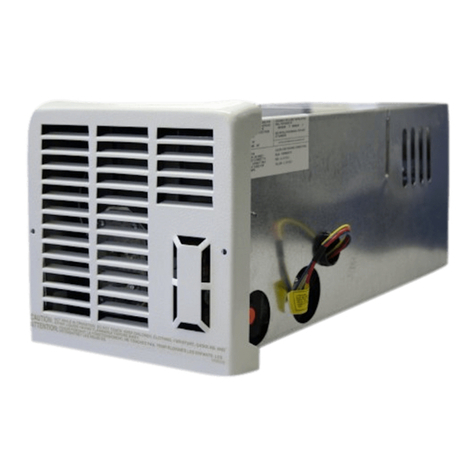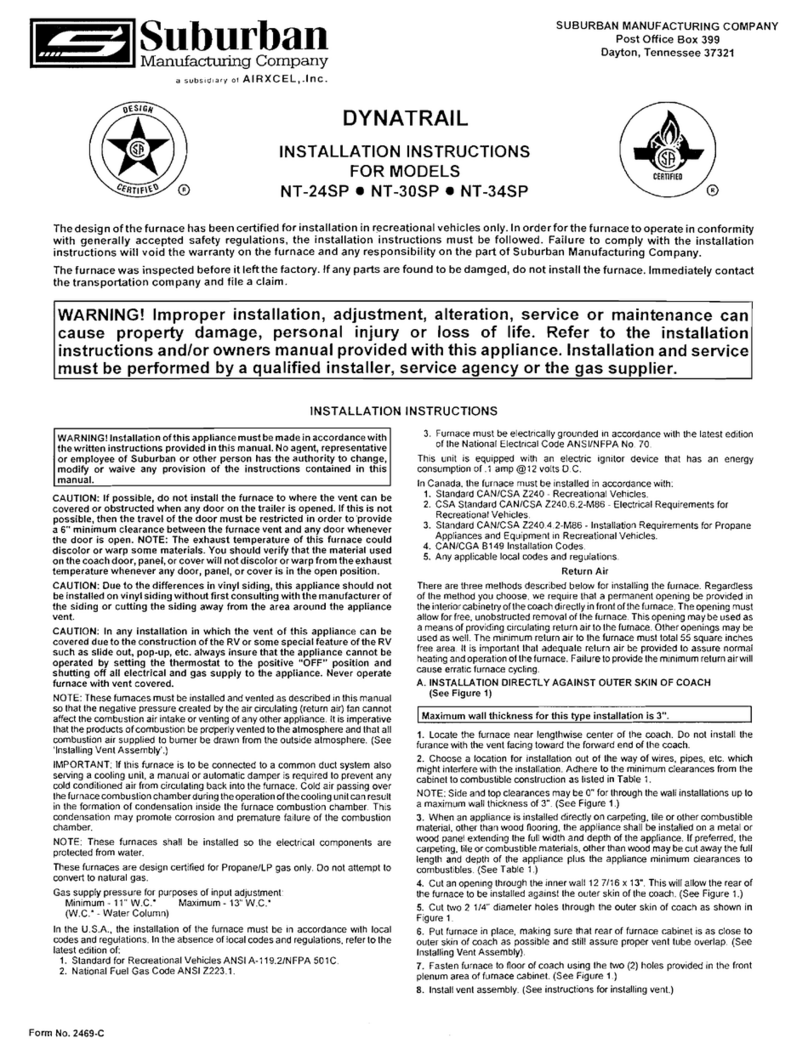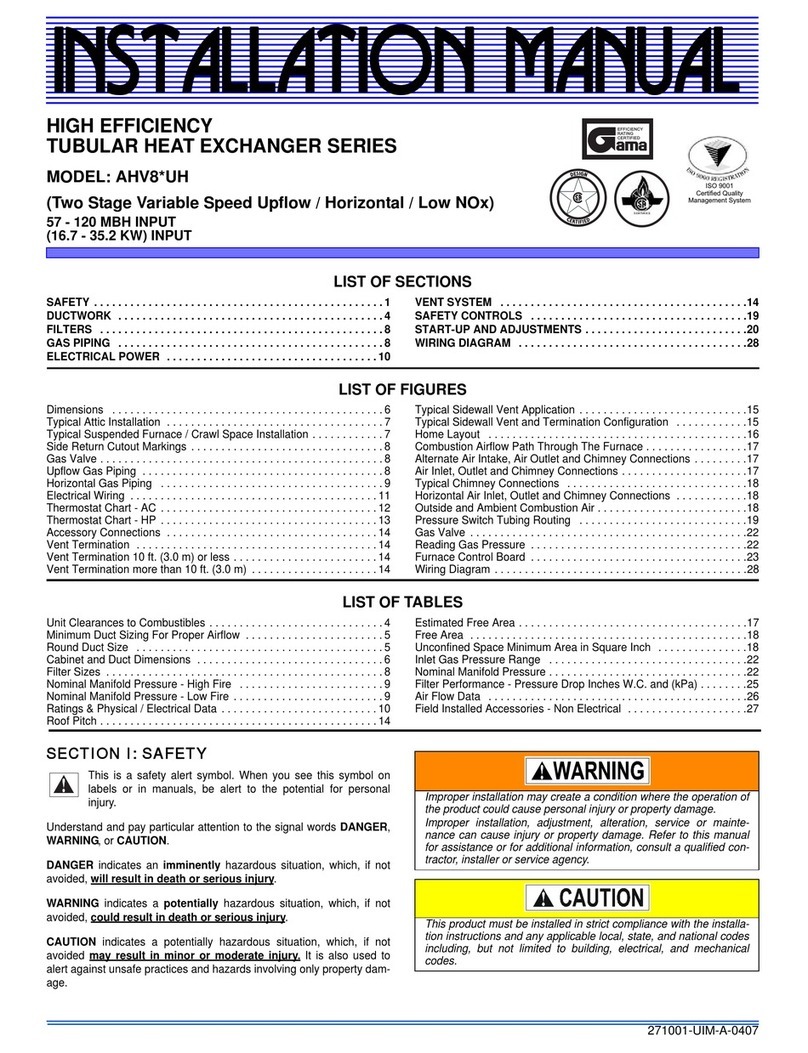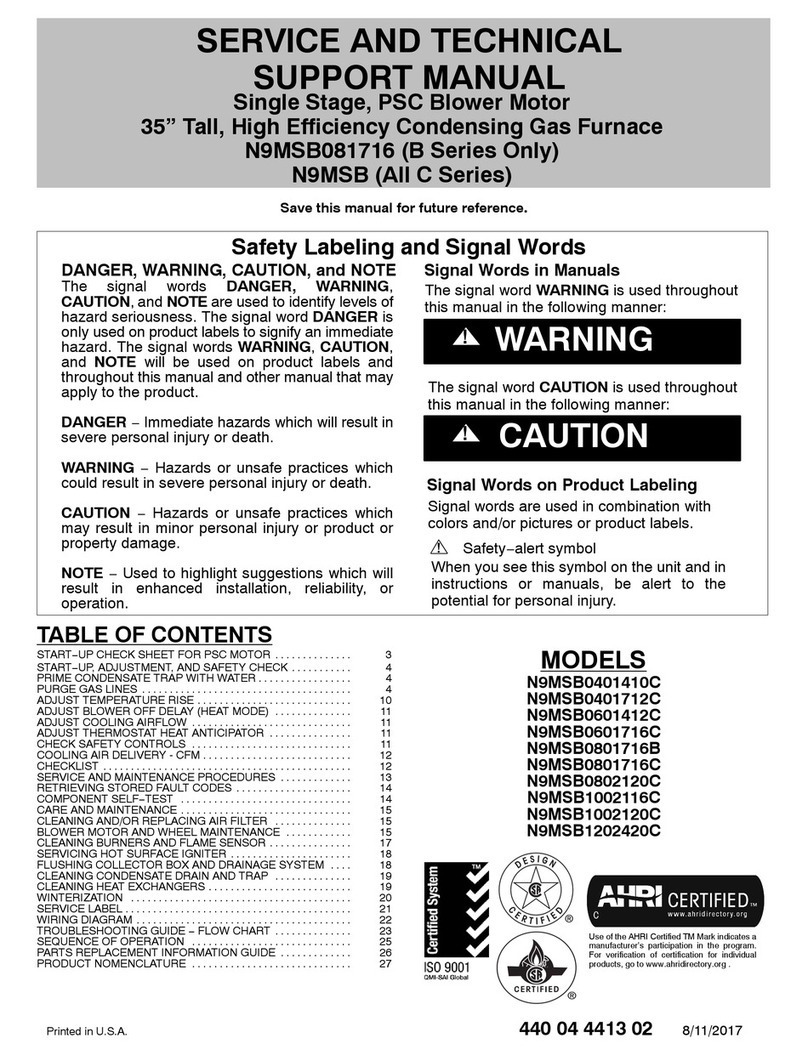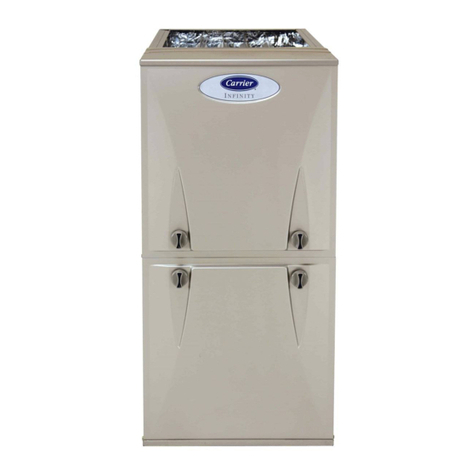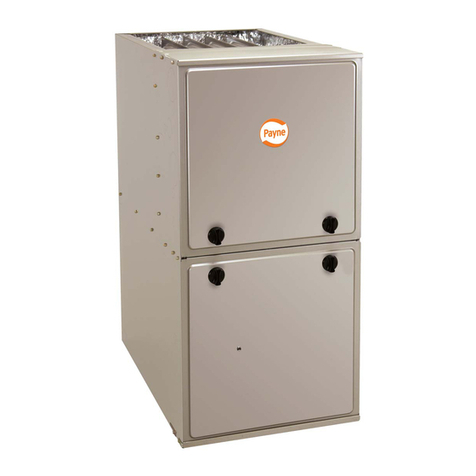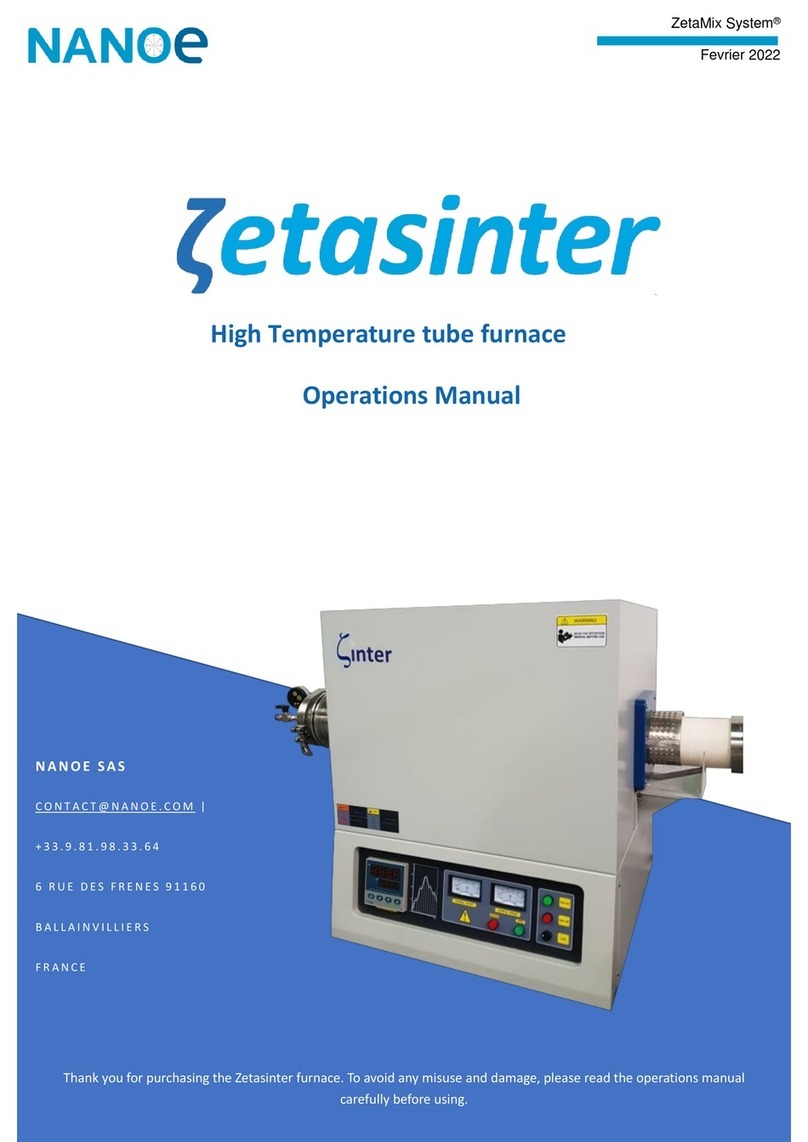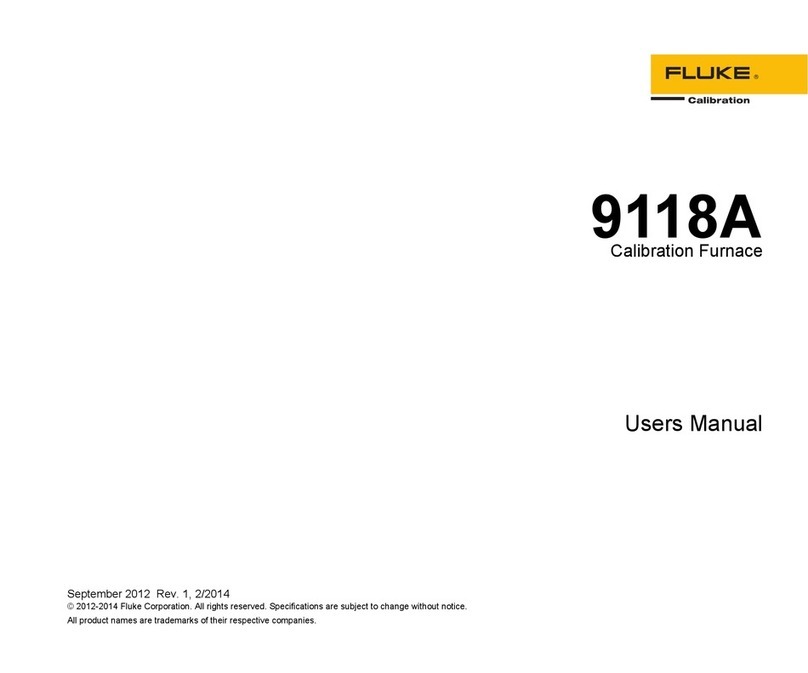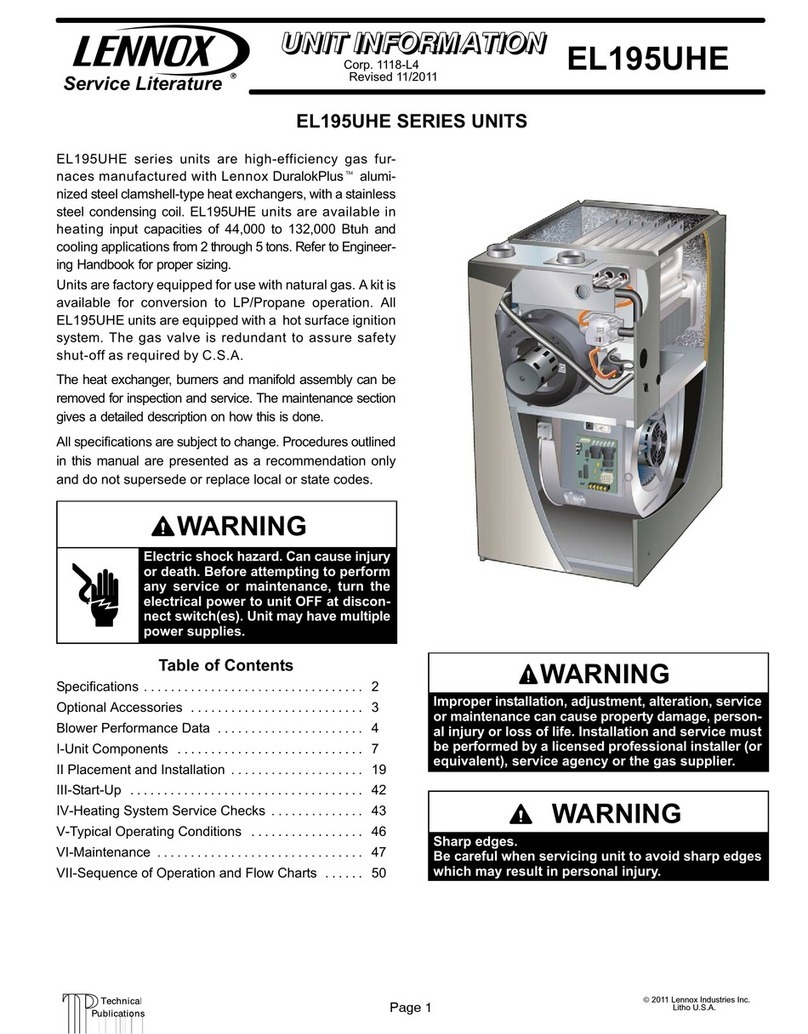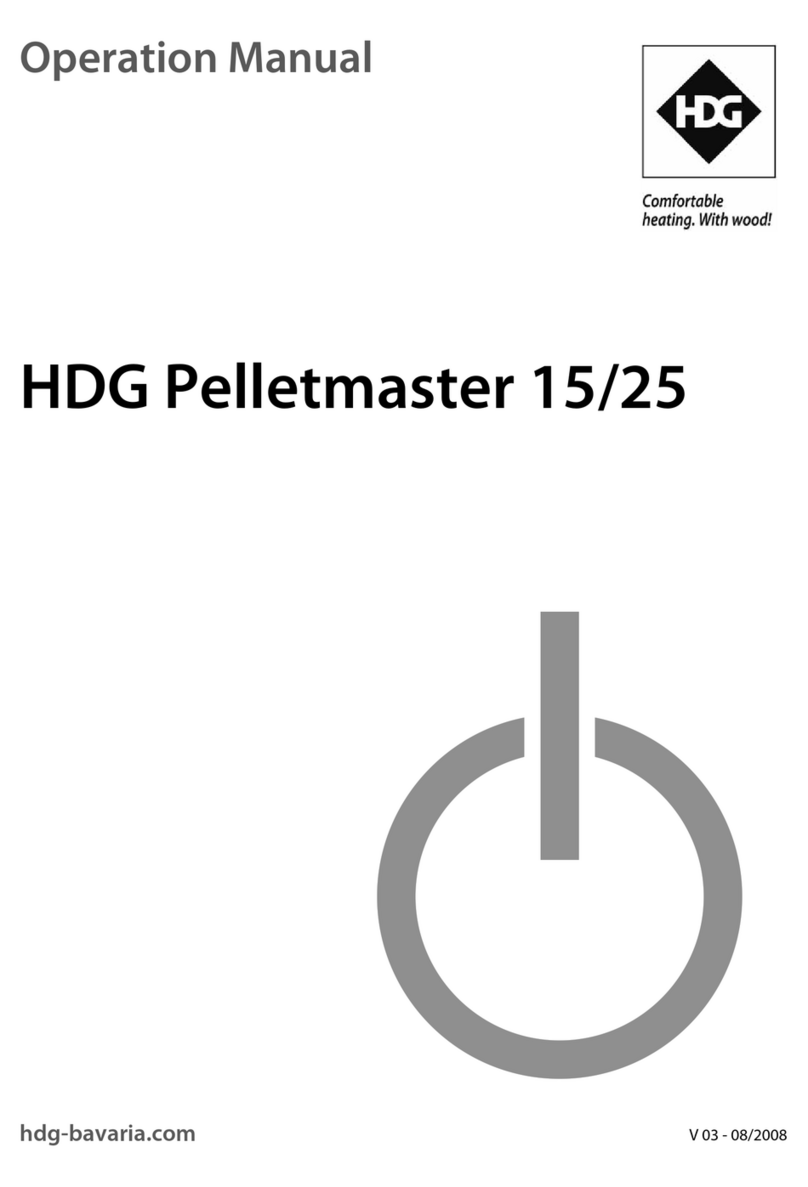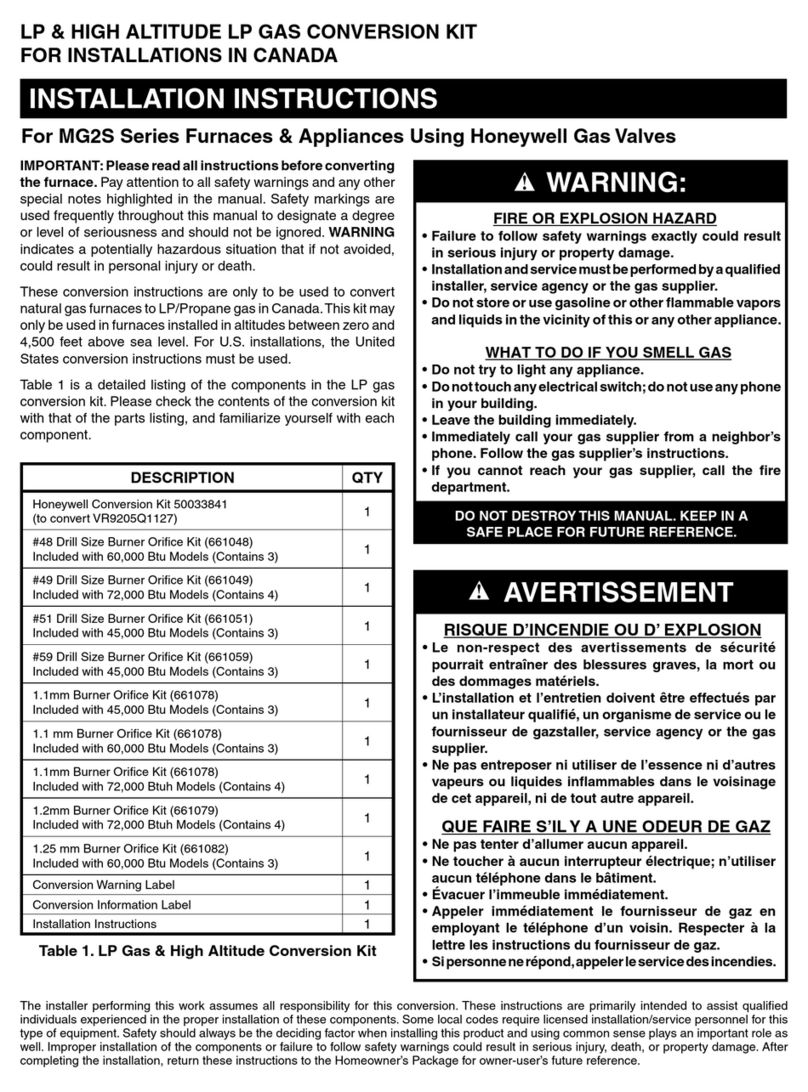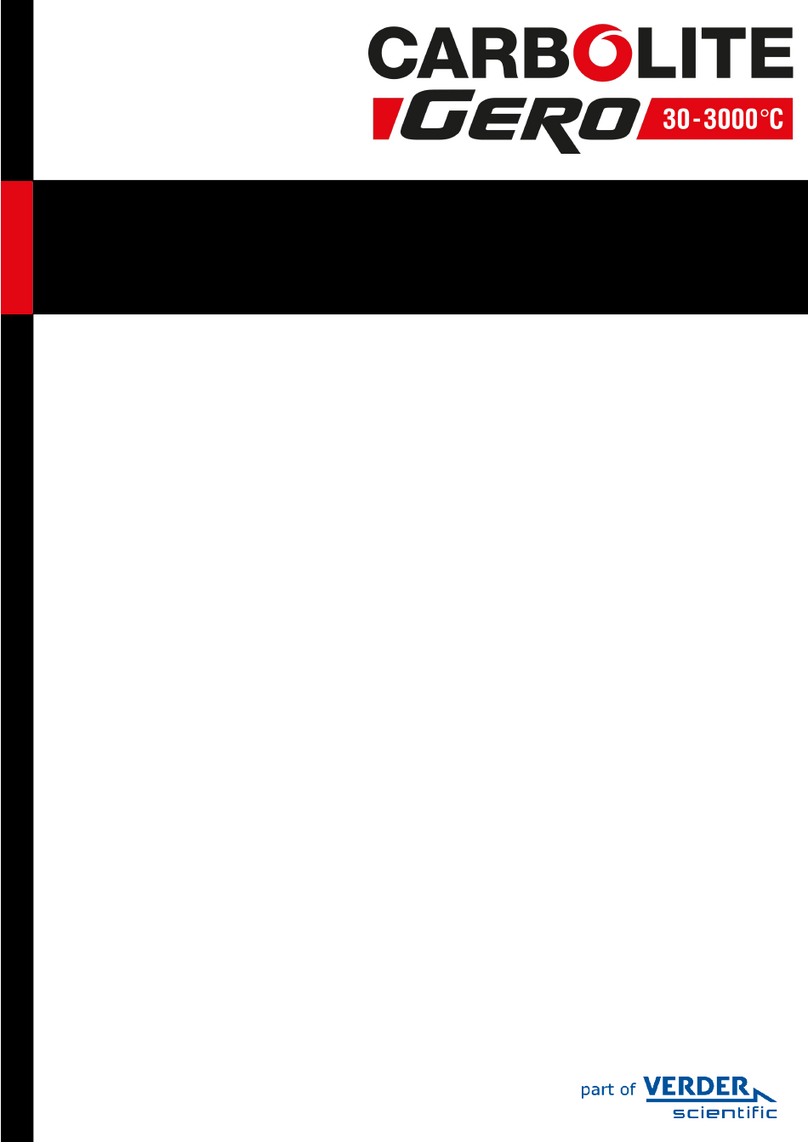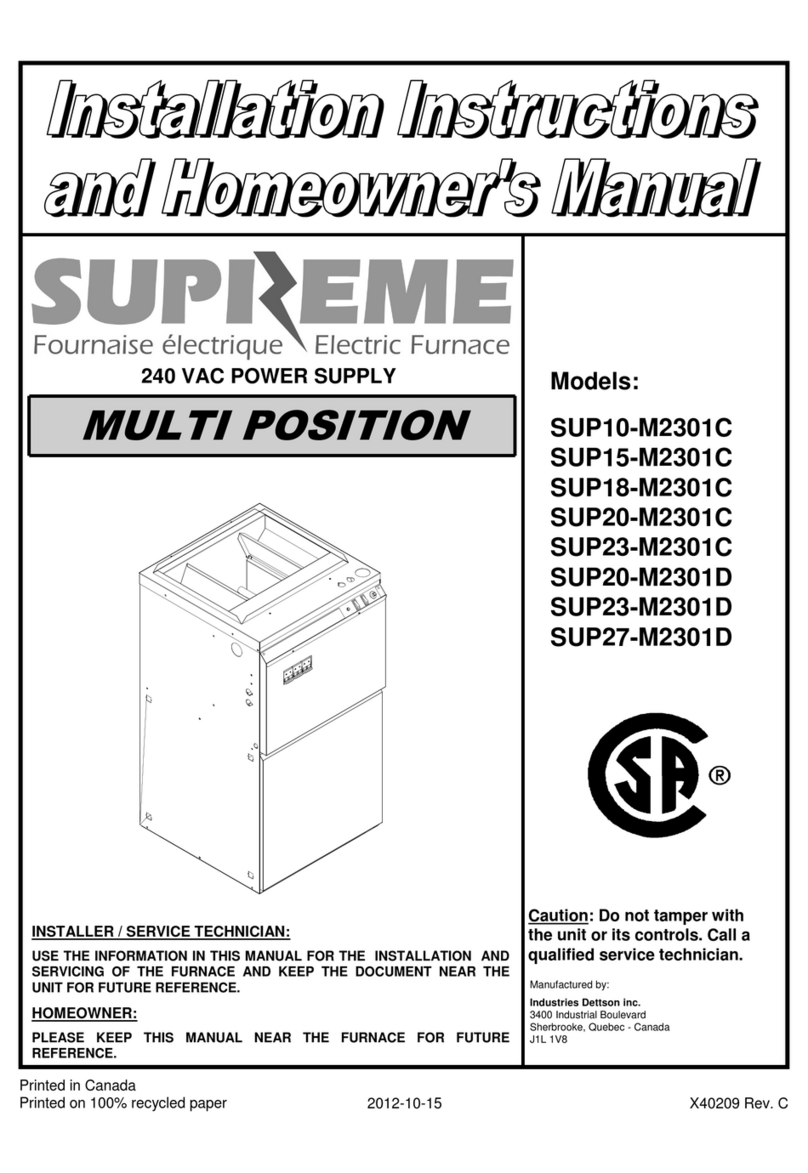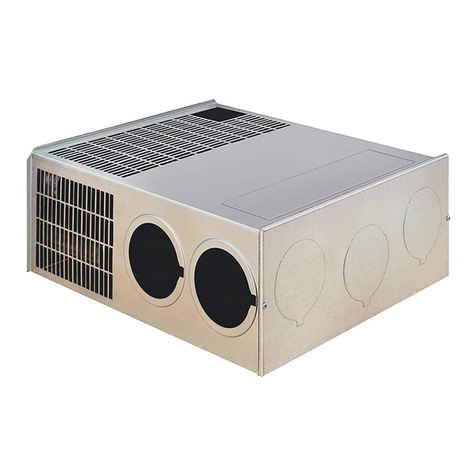
b.
If
you do not wish to cut the 4 x
7
112" opening, locate the center line of the INSTALLING VENT
exhaust and intake tube as shown inFigure
5
Next,cut two (2)2 314 diameter
t he
vent outlet must be installed so it is in the same atmospheric pressure zone
holesthroughtrailer skin and also the combustible wall ofthe traileras illustrated as thecombustion air intake.The exhaustand intaketubes mustbeinstalledfrom
in Figure
7.
Care must be takenwhen locating the center line of the exhaustand the outside, pass through the RV skin and slide onto the furnace exhaust and
intake tube as well as when cuttina the holes in order to assure a 318" clearance
intakp
around the exhaust and intake tubks to combustible materials.
8.
Ref?rto thechart inFigure 1or 2 (depending onthe furnace model) andselect
the range for which the
"X"
dimension falls. The intake tube length directly to the
leftofthe selected range isthe length required NOTE:The
7
314 lengthexha~~st
tube assemblywill accommodate all approved installationdepths -onlythe intake
tubemust beorderedwhen needed. Under nocircumstances shouldthestandard
3" intake tube be used when
"X
dimension is greater than 25" for Model NT-12
or NT-16,or greater than 25 518" for Model NT-20
9.
Secure furnaceto the floor using the two holes provided in the front area olthe
furnace cabinet (See Figure3 or 4.)
CONNECTING GAS SUPPLY
Connect the gas fitting (318" NPT to 318" Fiare) to the furnace at the manifold
provided on the right side of the furnace (Figure 3 or 4). Ail rnalejoints should be
treated withasealingcompound resistanttu the action of liquefiedpetroleunlgas.
NOTE Be sure all male joints have been treated with a sealing compound
resistant
to the action of liquefied petroleum (LP)gas.
NOTE The appliance must be disconnected from the gas supply piping system
durlngany pressuretesting of that system at test pressure inexcessof 112 PSIG.
The appliance must be isolated from the gas supply piping during any pressure
testing of the gas supplypipingsystem at test pressure equal to, or lessthan 112
PSIG
Inorder to maintain a check on gas supply pressure to the furnace, Suburban
advises the installer to provide a 118" NPT plug tap for test gauge connection
immediately upstream olthe gas supply connection to the furnace.
After the furnace has been connected to the gas supply, all joints must be
checkedfor leaks.
WARNING! Nevercheck for leakswith an openflame. Turnonthegasand
applysoapy water toall joints to see if bubbles are formed.
CONNECTING ELECTRICALSUPPLY
CAUTION! Thisfurnace isdesigned for negative ground 12 volt DC system
only. Do not attempt to alter the furnace for a positive ground system or
connect thefurnace directlyto115volts AC, Damagetofurnacecomponent
parts will occur.
Be sure all wiring to the furnace is of heavy enough gauge to keep the voltage
drop through it to a minimum. No. 12gauge wire is recommended If any of the
original wire that is supplied with the appl~ancemust be replace, it must be
replaced with Type 105°C or its equivalent.
Connect the power supply to the red and yellow wires in the right side of the
furnace.The wires arecolor coded, redfor positive
(+)
andyellowfor negative
(-).
This polarity must be observed so the furnace motor will run with the proper
direction of rotation to insure correct air delivery. (Seewiring diagram.)
If
the furnace power supply is to be from a convertor, we recommend that the
convertor system used to power the furnace bewired
iri
parallel with the battery.
This will serve two purposes:
1. Provide a constant voltage supplyto the furnace.
2. Filter any A.C. spikes or volt surges.
NOTE: Furnace Models NT-12S, NT-16s and NT-20s are equipped with an
electric ignitor device that has an energyconsumption of .1 amp at 12volts DC.
CONNECTING DUCTS TO FURNACE
The following duct requirements must be followed in order to assure proper
operation of the furnace.
A. Maintain a minimum of 25 square inches unrestricted duct area throughout
entire duct system including through register (Minimum 2 ducts
4
diameter.)
NOTE: Ducts terminating in a dead air space (like holding tank compartments)
with no means for return air recirculation should not be counted in the required
duct area. Also, ducts
2
in diameter or smaller should not be counted in the
required duct area.
El.
Maketl~eductconnections at the furnacecabinet tight. Loose connectionswill
resultinoverheatingof thefurnacecomponentpartsanda reductioninthe heated
air flow through the duct system.
C. Avoid making sharp turns in the duct system. Sharp turns will increase the
static pressure inthe plenum area and couldcause the lurnace to cycle.
D. Avoid making a lot of turns inthe duct system. The straighter the duct System
the better the performance of the furnace.
E. Maintainaminimumof 1
"
clearancewhereducts passthroughanycombustible
construction; such as, coach cabinetry. (See Figure 4A) NOTE: UL listed duct
materials can be
0"
clearance.
F. Do not install air boosters in the duct system. Such devices will cause the
furnace to cycle on limit and to have erratic sail switch operation.
NOTE After installationof thefurnaceandduct systemiscompieted,adjustments
must be made to obtain a temperature rise within the range specified on the
Rating Plate.
The efficiency rating of the furnace is a product thermal efficiency rating
determined under continuous operating conditions independent of any installed
system. CONNECTING THERMOSTAT
Locatethe roomthermostat approximately4 112 feet above the floor onaninside
bulkhead where it is not affected by heat from any source except room air.
Connectthermostatwiresto the bluewires leavingpowersupplyplugonrightside
of furnace. (See wirlng diagram.)
....-.~-.
-
WARNING! Donotalter the vent assembly suppliedwiththislurnace. Any
modificationswill resultinimproperinstallation whichcouldcause unsafe
furnace operation.
CAUTION! Combustionair must notbedrawnfromthe livingarea. All airfor
combustion mustbedrawn
fromthe outside atmosphere.Allexhaustgases
mustbe ventedtothe outside atmosphere
-
neverinsidethe RV. Therefore,
itisessential to insure that the vent cap and tube assemblies are properly
installed.
1. Applycaulkingto RVskin behindvent capas showninFigure
7.
Applycaulking
generously around perimeter of vent cap and across center as shown
2.
Insert intake tube through RV skin and slide it onto the furnace intake (See
Figure 1
.)
Minimum tube overlap of 112" is required
3.
Insert vent cap exhaust tube through RV skin and slide it onto the furnace
exhaust (See Figure 1
.)
Minimum tube overlap of 1 114 is required
4.
Attach vent cap assembly to outer skin of RV with the six (6) screws provided
Do not install vent assembly upside down. The words "Suburban" and "Dayton.
Tenn." must be right side up.
PREVENTIVE MAINTENANCE
WARNING! Ifthe user of this appliancefailstomaintainitinthe condition
inwhich it was shipped from the factory or if the appliance is not used
solely for its intended purpose or if appliance is not maintained in
accordance with the instructions in this manual, then the risk of a fire
and/or the production of carbon monoxide exists which can cause
CAUTION: Labelall
wiresbeforedisconnectingforservicing.
Properpolarity
mustbeobserved sothefurnace motor will runwiththe proper directionof
rotationto insurecorrect air delivery (See Wiring Diagram.)
CAUTION: Label all wires prior todisconnection when servicingcontrols
Wiring errors cancause improper and dangerous furnace operation.
Always verify proper operation of furnace after servicing
Your furnace should be inspected by a qualified service agency yearly before
turning the furnace on Particularattention should begiven to the following items
1. lnspect furnace installation andvent termination to besure furnace is properiy
secured in place (See Installation Instructions), that vent terminates to the
atmosphere,andthat venttubesoverlapproperly.(SeeInstallingVentAssembly.)
2. lnspect chamber and venting to assure that these components are physically
sound, without holes or excessive corrosion and that the installation andlor
reinstallationisinaccordancewithSuburban'sInstallationInstructions.(Reierence
:
installation manual supplied with furnace.)
WARNING! It isimperative that the products of combustion
be
properly
vented to atmosphere and that all combustion air supplied to burner be
drawn from outside atmosphere.
3.
Check the base on which furnace is mounted. Be sure it is physicallysound.
void of any sagging, deterioration, etc
4.
lnspect furnace, the venting, ducting and thegas pipingto furnacefor obvious
signs of deterioration. Correct any defects at oncs.
5. lnspect combustion chamber for restrictions in exhaust or intake It is
imperative that the flow of intake combustion air and the flow of exhaust gases
being expelled to the otitside atmosphere not be obstructed. Any soot or loose
debris should be blown out using compressed air. (See Figure 10.)
6.
lnspect all gaskets. If any gaskets show signs of leakage of deterioration.
replace them. Safe operation of the furnace depends on ail gaskets being tight.
7.
lnspect return air inlet openings to the fu:nace Remove any restrictions to
assure adequate air flow.
You, as the ownerluser, should inspect the furnace monthly during the
heating season (or presence of soot on vent. Operating the furnace under this
condition could lead to serious propertydamage, personal injuryor loss of life 11
soot is observed on the vent, immediately shut furnace down and contact a
qualified service agency.
Listed below are several safety related items that you shot~ldfollow during the
heating season to assure continued safe
operation
of the furnace.
1. lnspect furnace venting. Ventingmust be free of obstructions,void of soot and
Drooerlvterminated to the atmosohere. (See lnstallina Vent Assemblv.)
-
WARNING! Donot install screens over the vent for any reason. Screens
will become restrictedand cause unsafefurnace operation. Accessories
are being marketed for RV products which we do not recommend. For
yoursafety, onlyfactory authorized parts are to
be
usedonyour furnace.
2. Periodically inspect the vent for obstructions or presence of soot. Soot is
forined whenever combustion is incomplete. This is your visual warning that the
furnace is operating in an unsafe manner. If soot is present, Immediately shut
furnace down and contact your dealer or a qualif~edservice person.
